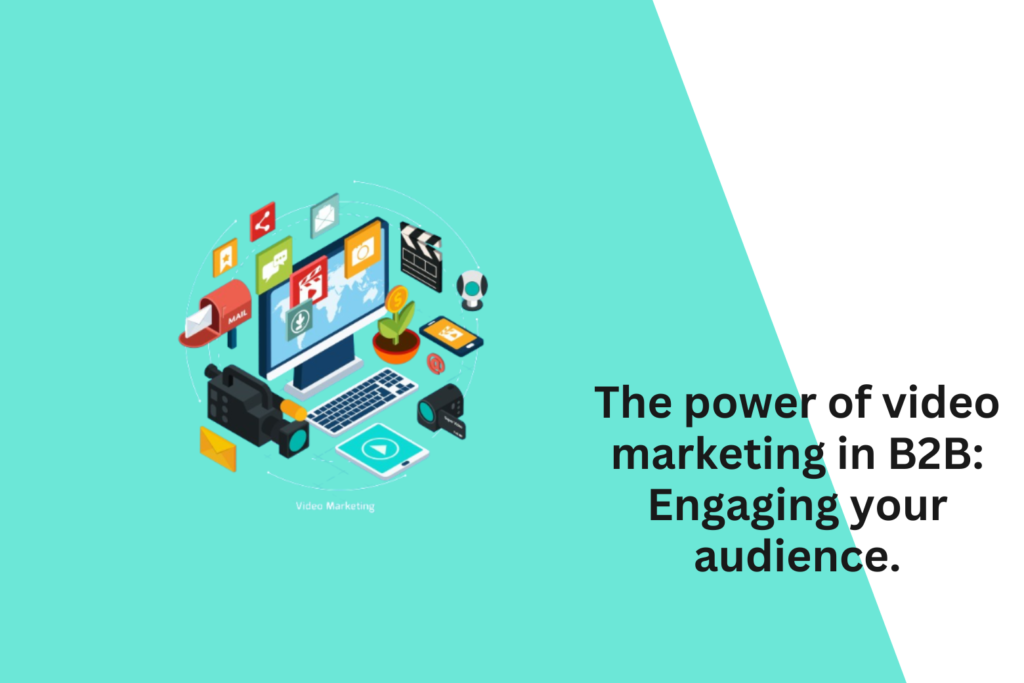
Video marketing in the B2B sector is currently a dynamic and highly effective strategy. It allows B2B brands to engage their audience, communicate complex information, and build trust. Here’s an overview of the current state of video marketing in B2B and how to use video content to engage your audience:
Current State of Video Marketing in B2B:
- Growing Adoption: B2B companies are increasingly adopting video marketing as a fundamental part of their content strategy. This growth is driven by the popularity of video across digital platforms.
- Content Diversity: B2B video content is diverse, including product demos, explainer videos, webinars, case studies, and thought leadership content. This variety caters to different stages of the buyer’s journey.
- Educational Value: Video is an excellent medium for conveying complex information. B2B buyers often look for educational content that helps them make informed decisions, and video fulfills this need effectively.
- Live Streaming: Live video streaming has gained prominence, especially for webinars, virtual events, and Q&A sessions. It offers real-time interaction and engagement.
- Personalization: B2B companies are using video for personalized messages, proposals, and product walkthroughs. Personalized video content can significantly enhance engagement.
- Social Media Integration: B2B brands are increasingly using video on social media platforms such as LinkedIn to reach a wider professional audience and build thought leadership.
How to Use Video Content to Engage Your Audience:
- Identify Audience Needs: Understand your B2B audience’s pain points and informational needs. Tailor your video content to address these specific challenges.
- Educational Content: Create videos that educate your audience about industry trends, best practices, or solutions to common problems. Thought leadership content can position your brand as an expert.
- Product Demos and Tutorials: Use video to showcase your products or services in action. Provide in-depth tutorials that help users make the most of your offerings.
- Customer Testimonials: Video testimonials from satisfied customers add authenticity and credibility to your brand. These can be powerful tools for building trust.
- Case Studies: Share real-world examples of how your product or service has solved problems for your customers. Case studies provide evidence of your value.
- Webinars and Virtual Events: Host webinars and virtual events on relevant industry topics. Promote them in advance to attract your target audience and encourage live participation.
- Live Q&A Sessions: Host live Q&A sessions on platforms like YouTube or LinkedIn. Answer questions in real-time, engage with your audience, and demonstrate your expertise.
- Interactive Videos: Use interactive elements within videos, such as clickable links or embedded quizzes, to engage the audience and collect valuable data on their preferences.
- Personalization: Create personalized video content for specific target accounts or decision-makers within organizations. Address them by name and offer tailored solutions.
- Optimize for Mobile: Ensure that your video content is mobile-friendly, as many B2B professionals access content on their mobile devices.
- SEO and Video Descriptions: Optimize video titles, descriptions, and tags for search engines. This can improve your video’s discoverability in search results.
- Transcripts and Subtitles: Provide transcripts or subtitles for your videos to make them accessible to a broader audience, including those with hearing disabilities.
- Promotion and Distribution: Share your videos across various channels, including your website, social media, email, and YouTube. Promote your videos through newsletters and collaborations with influencers.
- Analytics and Feedback: Analyze the performance of your video content using metrics like view counts, engagement rates, and conversion rates. Use feedback to continually improve your videos.
Consistency: Maintain a consistent posting schedule to keep your audience engaged. Consistency builds an audience’s expectation for new content.



